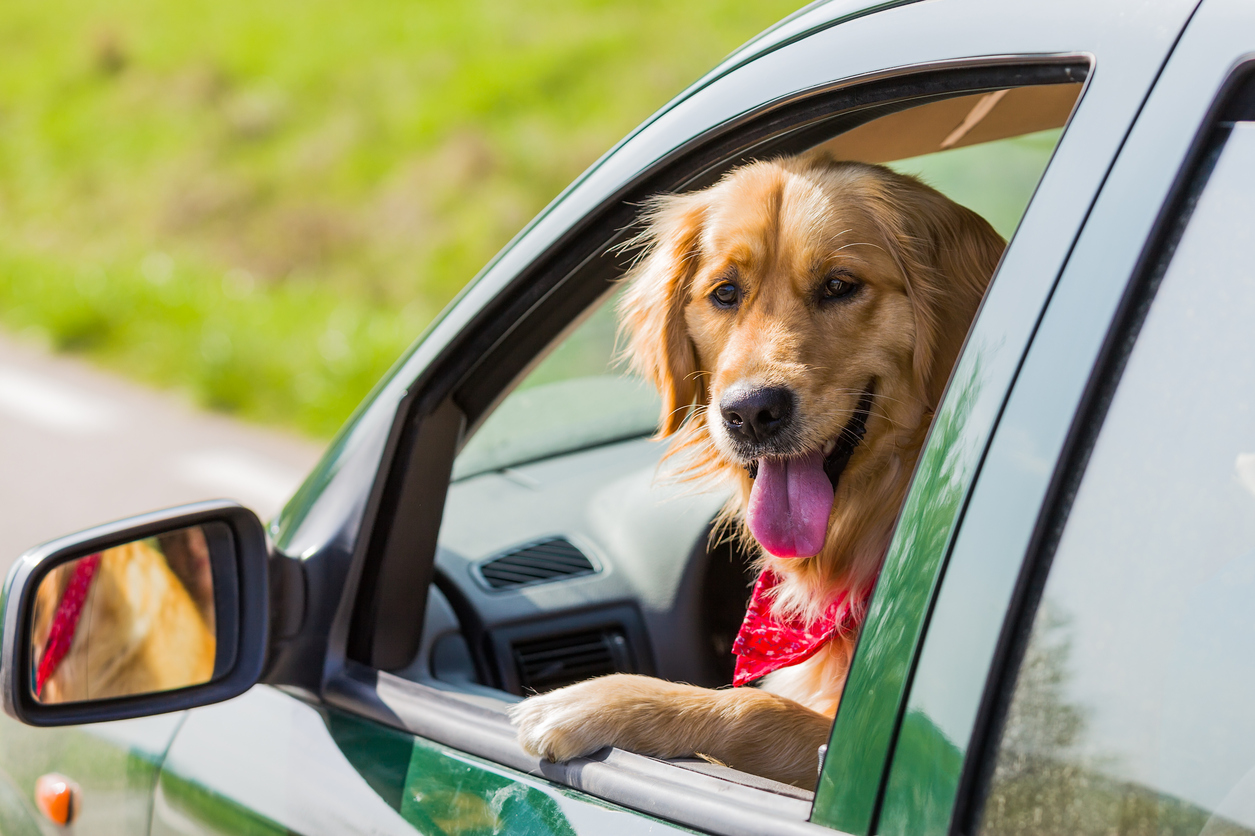Summer is here, which means your vehicle is going to be HOT. Check out these misconceptions about pets in the car.

Misconception #1: "I leave the windows cracked"
The Reality: Multiple studies have shown that leaving the windows cracked has only a minimal, and overall insignificant protective benefit.
One study showed that the average temperature rise of 3.4°F per 5 minutes in an enclosed car was only decreased to 3.1°F per 5 minutes by ‘cracking’ the windows. This equated to a difference of only 3.6°F over the 60-minute study period (40.8°F total heat rise with windows fully closed, compared to 37.2°F rise with windows ‘cracked’).
Another study showed only a 2°F difference at the end of the 90-minute study period between a fully enclosed vehicle and one with the windows ‘cracked’.
As you can see, while cracking the windows does have some effect on slowing down the temperature rise inside a car, that effect is minimal and it's not enough to prevent the temperature inside a car from quickly rising to deadly levels.
Misconception #2: “I’ll only be gone for a few minutes”
The Reality: Whenever you run into a store there are plenty of factors that are outside of your control and which can prolong your time away from your dog. Consider a longer than usual check-out line, bumping into a friend or neighbor, forgetting something from your shopping list, or even a slip and fall. There really are many unforeseen things that could realistically and significantly delay your return to your car. And that delay can result in your dog suffering (and potentially dying) from heat stroke.
The next time you dart into a store for a “quick shopping trip”, time yourself. Do this exercise a few times and see how long “a few minutes” can actually be. Then keep the following numbers in mind…
- 19° – that’s the average °F temperature rise in a parked after just 10 minutes in one study
- 29° – the average °F temp rise after just 20 minutes
- 34° – the average °F temp rise after 30 minutes
- 43° – the average °F temp rise after 60 minutes
Now imagine what this would equate to on a relatively mild 80°F day. Imagine what it would be on one of the 100°F days that are common in certain areas, and are becoming more commonplace in others. The results can be devastating – quickly!
Misconception #3: “It’s only 70°F out, there’s no danger of heat stroke”
The Reality: Temperatures in the low 70s are plenty hot enough to cause a dog left in a parked car to develop and suffer from heat stroke. In fact, the study cited above was conducted in San Francisco on a series of relatively mild days. On one of the 72°F days during the study the temperature inside the test car reached 93°F in 10 minutes, 105°F in 20 minutes, 110°F in 30 minutes, and 119°F in 60 minutes! Plenty hot enough to cause heat stroke.
Not only is 70°F warm enough to result in heat stroke, even temperatures in the low 60s can be dangerous for some pets. This is because certain cats and dogs – based on factors such as breed, weight, existing medical conditions, and several other factors – are actually more sensitive to heat than others, and therefore at even greater risk of developing and suffering from heat stroke. You can learn more about these “predisposing factors” here, in our Heat Stroke in Cats and Dogs: Is My Pet At Risk? Article.
Misconception #4: “I always leave water in the car for my dog, so I don’t have to worry about heat stroke”
The Reality: Though leaving water is a good thing, as it can help to prevent dehydration and heat exhaustion, it does very little to stave off heat stroke in parked cars. The reason is that dogs rely mostly on the evaporative cooling effects of panting to get rid of excess heat, and their ability to do so effectively is quickly overwhelmed in a hot, stuffy car… regardless of whether or not they have a water bowl in front of them.
Misconception #5: “I leave the air conditioner running, so I don’t have to worry about heat stroke”
The Reality: Air conditioner compressors and car engines fail, and dogs knock into and inadvertently press and hit buttons and switches. Sadly there are plenty of cases of dogs dying when the car air conditioner failed or a dog bumped into and switched off the air conditioner.
When air conditioner compressors fail, the air blowing into the car from the vents often turns from cool to hot, greatly speeding up the temperature rise within the car.
Many of these sad cases involved police dogs who were in K9 patrol cars with back-up alarms and other failsafe mechanisms…
- Drug dog's death has Muleshoe police looking at alert system
- Mississippi K-9 dog dies in hot police vehicle
- Mulberry Police Dog Dies When Patrol Car AC Fails
- Camden police K-9 dies after cruiser air conditioning system reportedly fails
If it can happen in these scenarios, you’d be kidding yourself to think that it couldn’t happen to your dog and in your car. So while leaving your car air conditioner running can help to protect your dog from heat stroke, it can also provide a false sense of security and it can even backfire.
Thank you Preventive Pet for publishing this article on pet safety.